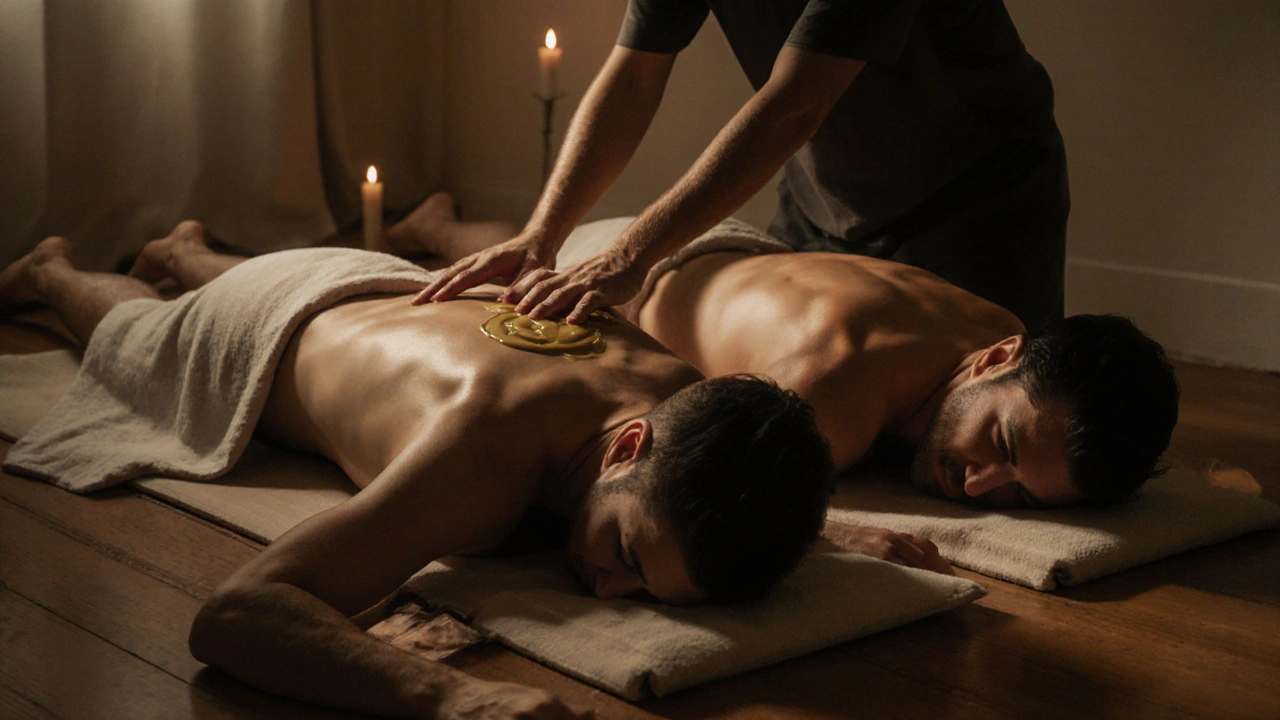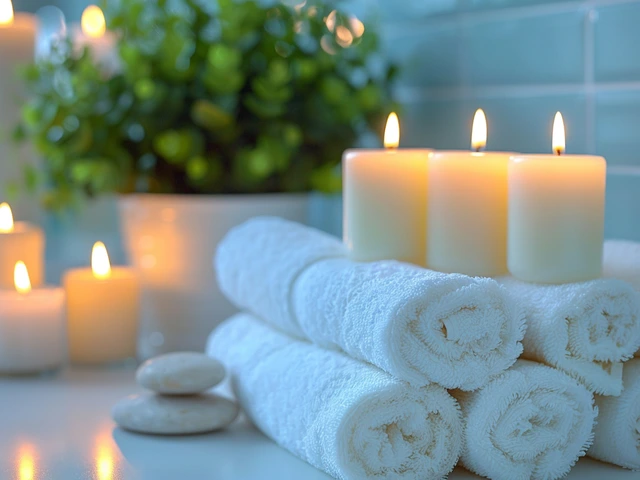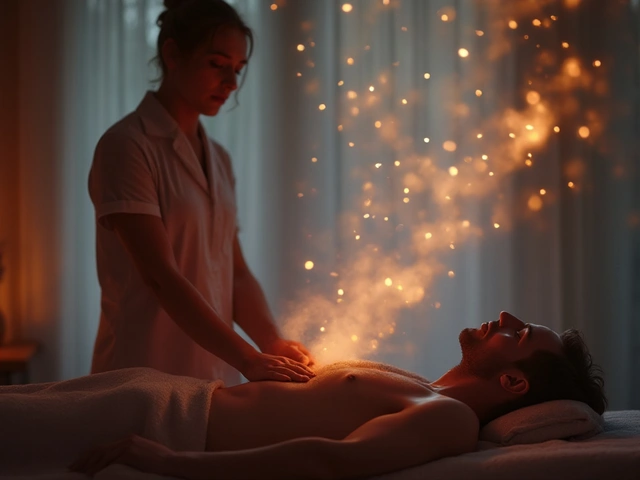Inclusive Tantric Massage Language Checker
Analyze Your Service Description
Paste a description of a tantric massage service to check for inclusive language. This tool identifies exclusionary terms and suggests alternatives that welcome all couples.
Tip: Even if you don't see explicit LGBTQ+ language, asking direct questions about inclusivity can reveal whether a practitioner is truly inclusive.
Most tantric massage offerings still speak as if every couple is a man and a woman. You’ll see terms like lingam and joni everywhere-words rooted in traditional Hindu anatomy, but rarely adapted for real modern relationships. If you’re a same-sex couple looking for a tantric experience that honors your connection, not your gender, you’ve probably hit a wall. The truth? It’s not that these experiences don’t exist. It’s that they’re hidden.
Why Most Tantric Massage Offers Feel Exclusionary
The language used in tantric massage ads isn’t accidental. It’s inherited. Many practitioners learned from older lineages that mapped energy flow onto binary male/female anatomy. That’s fine if you fit that model. But if you’re two men, two women, or someone who doesn’t identify within those boxes, those terms don’t just feel outdated-they feel erasing. Take a look at most Czech wellness websites. Out of ten major providers, nine use phrases like "husband and wife," "male and female energy," or "penis and vulva" without exception. Even when they say "couples," they don’t say which couples. This isn’t necessarily malice. It’s habit. But for LGBTQ+ clients, it creates silence where there should be welcome. A 2022 survey by SLMK found that only 12% of wellness centers in the Czech Republic have any official LGBTQ+ inclusion policy. That means 88% of places you might book don’t say whether you’ll be seen, respected, or even understood. And if you don’t see it written, you assume you don’t belong.What Tantric Massage Actually Is (Beyond the Myths)
Tantra isn’t about sex. It’s about presence. It’s about slow touch, breath synchronization, eye contact, and feeling energy move-not just in the genitals, but in the chest, the spine, the palms, the soles of the feet. The goal isn’t orgasm. It’s connection. In a tantric session for couples, the focus is on:- Building trust through non-sexual touch
- Learning to receive without performance pressure
- Awakening sensitivity to subtle energy shifts
- Deepening emotional intimacy through shared stillness
How Inclusive Tantric Massage Works for Same-Sex Couples
An inclusive tantric session starts with a conversation-before you even undress. Instead of assuming anatomy, a skilled practitioner asks:- What parts of your body do you want to explore together?
- Where do you feel most alive when touched?
- What kind of energy do you want to cultivate-calm, playful, grounding, electric?
- One partner receiving while the other observes and breathes with them
- Both partners receiving simultaneously in separate but connected spaces
- Using oils, sound, or breathwork to deepen mutual awareness
- Touching anywhere-back, thighs, shoulders, scalp-without labeling it as "erotic" or "non-erotic"
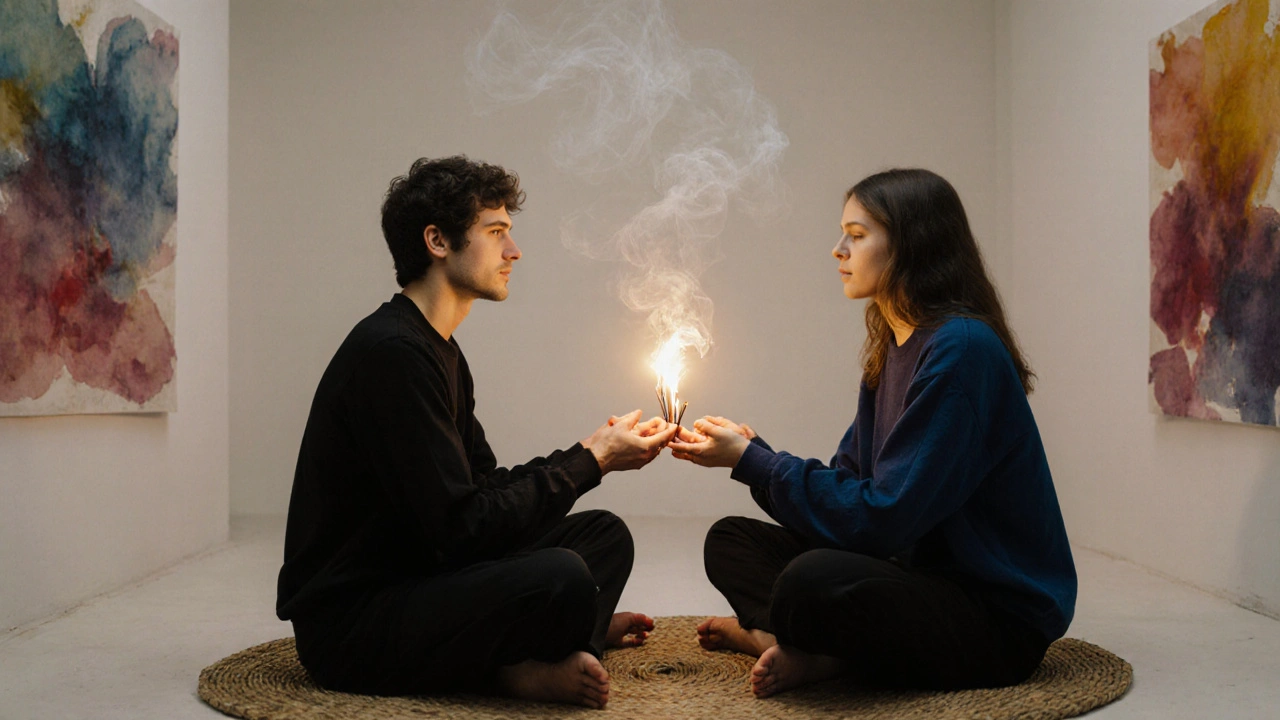
What to Look For (And What to Avoid)
Not every tantric therapist knows how to work with same-sex couples. Here’s how to find one who does:Do This:
- Look for language like "all couples welcome," "gender-neutral space," or "LGBTQ+ affirming"
- Check if they mention "anatomy-neutral touch" or "energy-based practice" in their descriptions
- Call or email before booking. Ask: "Do you work with same-sex couples? How do you adapt your approach?"
- Trust your gut-if they hesitate, sound uncomfortable, or redirect to "traditional" methods, walk away
Avoid This:
- Websites that only show photos of heterosexual couples
- Practitioners who use terms like "masculine/feminine polarity" without explaining how it applies to you
- Any place that refuses to answer questions about inclusivity
Real Experiences: What Couples Are Saying
One couple from Prague, both men, booked a session at a small studio after months of searching. They didn’t mention their orientation on the booking form. When they arrived, the therapist asked: "How would you like to define your energy dynamic today?" That one question changed everything. "They didn’t assume anything," one of them later wrote. "We talked about how we usually touch each other at home. Then they guided us to slow it down, to feel the warmth between our hands, not just the skin. We cried. Not because it was sexual. Because it was the first time someone treated our love like it was sacred, not strange." Another lesbian couple from Brno booked a session after reading a single line on a therapist’s website: "All loving connections are valid here." They didn’t say anything else. The therapist didn’t either. They spent three hours in silence, breathing together, hands on each other’s backs, tears falling without explanation. They left holding hands. No words needed.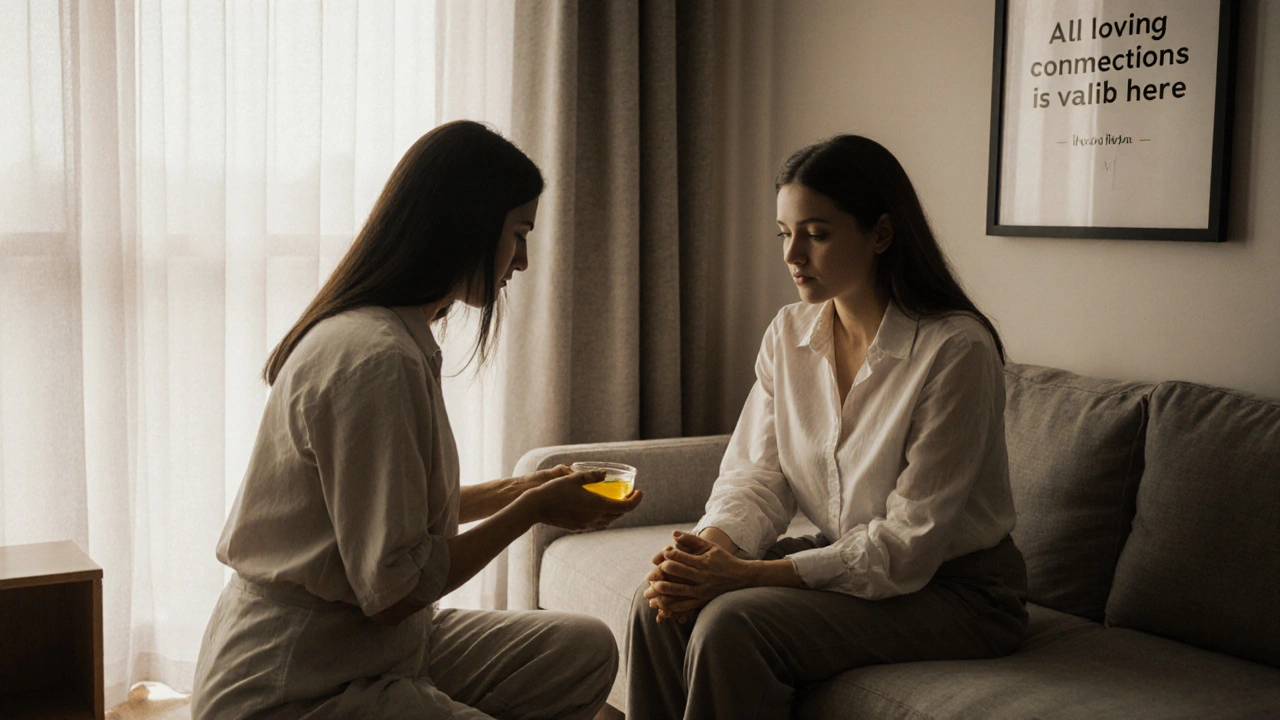
How to Advocate for Yourself
If you can’t find a provider who openly welcomes same-sex couples, you still have power. Most therapists are willing to adapt-if you ask. In fact, many say they’ve done it before but never advertised it because they assumed no one would ask. Here’s what to say when you call:"Hi, I’m reaching out because my partner and I are a same-sex couple, and we’re interested in a tantric massage. I wanted to know if your practice is comfortable working with LGBTQ+ couples, and if you adjust your techniques to honor different bodies and connections?"If they say yes-great. If they say "we treat everyone the same," press gently: "That’s good to hear. Can you tell me how you adapt your language or touch to make sure no one feels unseen?" You’re not asking for special treatment. You’re asking for visibility.
The Future Is Already Here
In early 2023, the Czech Association for Sexual Education launched a pilot program to train 15 therapists in inclusive tantric practices. By the end of the year, five centers in Prague and Brno were certified. They don’t advertise it loudly. But they’re there. Meanwhile, global standards from the European Tantra Therapists Association now require gender-neutral training for certification. That means the next generation of therapists will learn this from day one. You don’t have to wait for the industry to catch up. You can start now. Find a trusted partner. Set the intention: "We’re here to feel each other, not to perform." Book a session with someone who listens. Even if they don’t have a fancy website, if they hear you, that’s enough. Your love doesn’t need a label to be sacred. Your touch doesn’t need permission to be healing.Frequently Asked Questions
Can tantric massage work for same-sex couples if it’s traditionally based on male/female energy?
Yes. Traditional tantric models were developed in a binary cultural context, but the core principles-presence, breath, energy flow, and deep touch-are universal. Inclusive practitioners focus on your body’s signals, not gendered assumptions. Energy isn’t male or female. It’s alive. And it responds to attention, not labels.
Will the therapist use terms like lingam or joni during the session?
In an inclusive session, no. A skilled therapist will avoid gendered anatomical terms unless you specifically ask for them. They’ll use neutral language like "erogenous zones," "sensitive areas," or "your body’s response." If they default to old terminology without checking in, it’s a red flag.
Is tantric massage for same-sex couples sexual?
It can be, but it doesn’t have to be. The goal is intimacy, not orgasm. Many couples report feeling emotionally moved, physically relaxed, or spiritually connected without any genital contact. The focus is on building trust through touch. If a session feels pressured toward sex, it’s not tantric-it’s erotic massage. Tantra honors stillness as much as movement.
How do I know if a therapist is truly inclusive?
Look for three things: 1) They use gender-neutral language on their website or in their intro, 2) They ask about your relationship dynamics before the session, and 3) They’re open to adjusting the structure based on your needs. If they only show heterosexual couples in photos or refuse to answer questions about LGBTQ+ clients, they’re not inclusive-not matter what they say.
Are there any tantric massage providers in the Czech Republic who specialize in LGBTQ+ couples?
As of 2025, there are only a handful of certified providers in Prague and Brno, trained through the Czech Association for Sexual Education’s pilot program. They don’t always advertise widely, so calling ahead and asking directly is the best way to find them. You can also search for therapists who list "gender-neutral," "LGBTQ+ affirming," or "trauma-informed touch" in their profiles.

